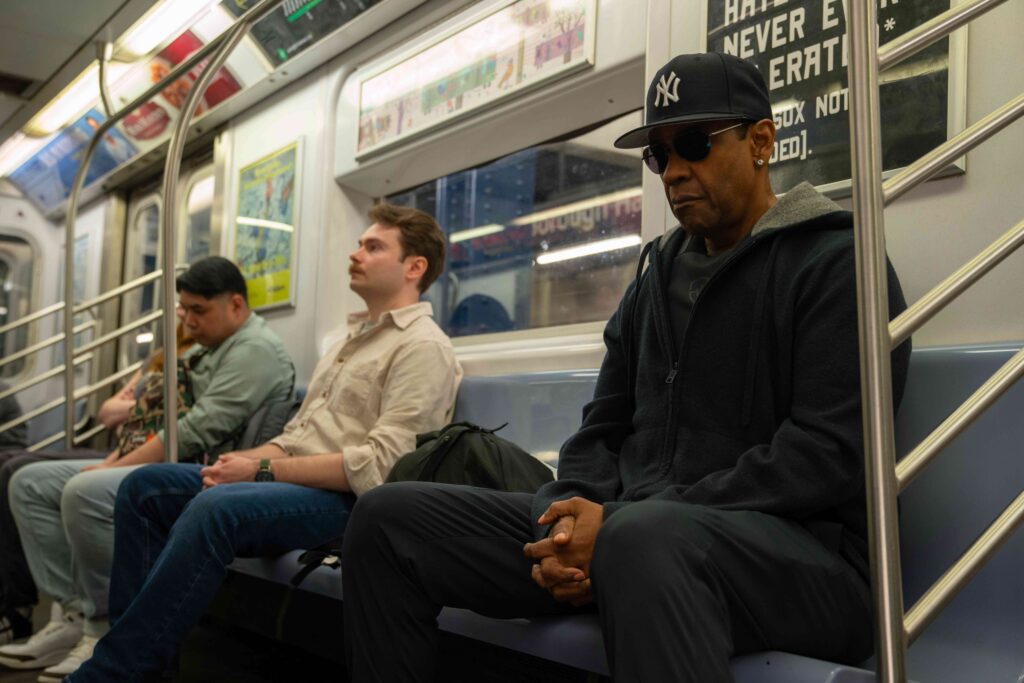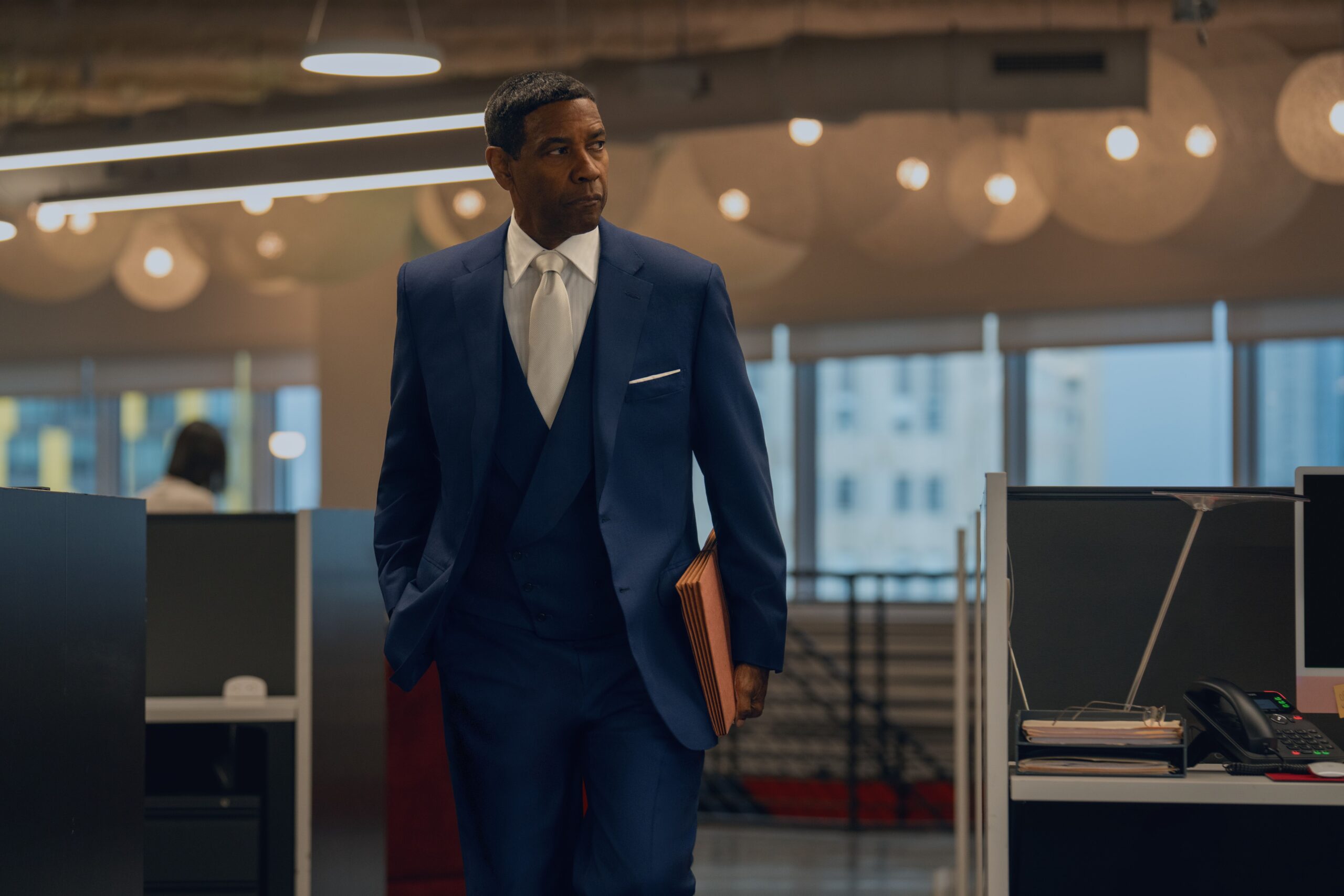Here’s an announcement for those who might not know, and based on the insane burial of its theatrical release, this may be the case for many: There is a brand new Spike Lee film starring Denzel Washington in theaters right now. Furthermore, it’s an ode to High and Low, the masterful 1963 Akira Kurosawa film. It’s also the first NYC-based feature film Lee has made in 13 years! This is all to say that Highest 2 Lowest should be a much bigger deal! And much like David King (Washington) trying to gain a better sense of the world crumbling around him, I, and many other cinephiles, want to know what’s going on! One of our all-time great filmmakers has given us another gem of a film. It also undoubtedly has some of the best sequences of the year. Lee’s films are nothing if not impassioned works time and time again, and his latest is no exception. Even if this were a bad film (it’s not), Lee crafting a love letter to his beloved Kurosawa serves a vital purpose. It will hopefully introduce audiences to an essential voice in the history of cinema. And isn’t that sentiment the same as what King became beloved for at his fictional record label in the first place?
This ”re-imagining” of the Kurosawa film follows King amidst a high-profile buy-out of his once lauded record label, before a kidnapper places him in an ethical and moral dilemma. Lee opens the film by treating us to sweeping landscape shots of Manhattan and Brooklyn, before sweeping up to find his beloved partner-in-cinema Washington pacing back and forth atop a tower overlooking the kingdom of New York. It’s notable that, despite such liveliness visible along the Brooklyn Bridge and the streets of DUMBO, not a sound can be heard but the crisply captured phone call King is partaking in. For somebody who is repeatedly referred to as having “the best ears in the business,” it’s not difficult to imagine that he’s had his senses pulled in countless directions for quite some time. As such, the world around him was better off being muted than dealing with its overwhelming nature any longer. When called out by his son, Trey (Aubrey Joseph), about not being as proactive as he once was when it comes to discovering music, King simply dismisses it by saying, “I’ll listen when I come up for air.” It’s through these moments of organic characterization that, within minutes, Lee has formed a direct link between himself and his lead character.

King has found himself so preoccupied with the business side of things that any of the artistry that fuels it all has been somewhat abandoned. But is King solely to blame for this? Music is fundamentally different in 2025. From how music is released, to how it’s consumed by fans, to how it’s awarded recognition and relevance in culture, is constantly, and rapidly, evolving. The same can be said for the film industry, perhaps even moreso. Across the last 4 decades, Lee has been a foundational voice in the world of cinema. Looking across countless films Lee has made, his constant grappling with the artistry of movies versus the commerce of the business backing them is clear. That’s no different with Highest 2 Lowest. It’s just a shame that this segment of the film is arguably the most unfocused.
Perhaps the greatest marvel of Kurosawa’s High and Low is just how expertly woven together each segment of the film feels. It’s undeniably greater than the sum of its parts, but Kurosawa deftly allows each third to feel unique in style, tone, and even genre. I’d go as far as arguing that the first third of High and Low may be the best single hour of filmmaking ever? Regardless, even without comparing the two films, the first third of Lee’s Highest 2 Lowest feels stunted and a bit disjointed. Its tone is jumbled in a way that messes with the pacing. It almost feels as if it’s just going through the motions of table setting. Although looking at what follows this rocky start, perhaps the rough edges present are worth the price of the following two thirds of the film. Once Lee shifts King and the film into the second act, it’s as if Lee too begins operating at an entirely new level.

In one of the most propulsive sequences of 2025, Highest 2 Lowest reminds audiences of the thrilling beauty Lee and Washington delivered with 2006’s Inside Man, their last collaboration. This chase sequence features several Lee trademarks: the double dolly, a stunning shift in visual language from slick digital to breathtaking 16mm film, characters spiking the lens in service of praising New York City. All these flourishes, as pure fun as they may be, are also thematically relevant. King is driven around in a Rolls Royce for a majority of the film. Up until this point, when was the last time he even considered taking the subway, let alone found himself on one? Despite the greatness Lee has given us with his last few films, his latest also finds the filmmaker going back to his roots and capturing the beautiful chaos of New York City. This chase sequence takes place during the Puerto Rican Day parade. Beyond merely serving as a thrilling setting for the setpiece, Lee highlights these crowded streets amassed in celebration to represent a dichotomy that has been present throughout much of Lee’s career. The streets are full of pedestrians singing and dancing to a stunning musical performance from Eddie Palmieri. Anybody who likes to have fun would want to be amidst that beautiful crowd, taking in the sights and sounds that New York so graciously provides to its residents. But Lee intercuts this joy with a fuming anger from Detective Higgins (Dean Winters) as he is caught amongst the crowd. In this heightened chase for money, countless individuals have found themselves oblivious to the beauty and artistry on display around them. It’s clear Lee is having a blast filming this foundational New York tradition. So one can’t help but sense the battle present between chasing that beauty and chasing that money. The business half of this chase is directly clashing with the artistic half. As always, Lee as a filmmaker is anything but subtle; and we adore him for that. It’s this sentiment which perfectly sets Lee up for the final third of his film.
King comes to the realization of the kidnapper’s possible identity, and is swiftly ignored by the police. They insist on following protocol and relying on available technology to determine if the lead is worth chasing. King calls out the ludicrous nature of this chain of events, exclaiming he “doesn’t need AI to tell me what I already know.” It may be heavy-handed, but the righteous mockery of AI throughout this film is a delight. We have come to see the new Spike Lee joint in all its glory. There’s no blueprint to film, music, detective work, or even life itself. There is simply believing in our intent and the driving force behind ourselves. That sense of self, whether it’s what influences our moral decisions, our artistic decisions, or anything in between, is what gives us a distinct voice. No form of AI, or any technological supplement for that matter, could ever replace the real thing. With Highest 2 Lowest, we showed up to see Lee do his thing in the way he knows best. And in that regard, he absolutely delivered. For example, shortly after this parade chase, Lee sets up a sequence wherein Washington delivers rap battle bars to Yung Felon (a perfectly cocky A$AP Rocky) as if he’s delivering Shakespearean dialogue. It’s bafflingly great, and the fact that it works so well is a testament to Lee’s house style that’s undeniably fun, poignant, and idiosyncratic. Following what basically amounts to an A$AP Rocky music video and one of the most dazzling shots of the year, Lee delivers a coda which is liable to take away the collective breath of his audience. Beyond featuring a dazzling performance from singer Aiyana-Lee Anderson (with what one would hope is a shoo-in nomination for Best Original Song), Lee leaves us with what amounts to a final direct address. It’s an open question not just about having what it takes to sacrifice everything, but also the integrity to stand behind one’s choices wholeheartedly. Whatever the fallout may be, whether it’s memes and jokes or outright slander amidst personal struggles, can we stand behind something and say we’re proud of the decisions we made? It’s clear Lee has done this his entire career all out of love for the game, and Highest 2 Lowest is no exception. Hopefully we all are able to walk out of the theater and share in that same sentiment.
